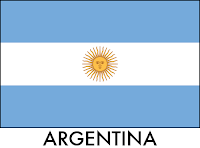 King of the Lobby: The Life and Times of Sam Ward, Man-About-Washington in the Gilded Age
King of the Lobby: The Life and Times of Sam Ward, Man-About-Washington in the Gilded AgeKathryn Allamong Jacob
$33, 240 pages, The Johns Hopkins University Press
Several months ago I received a review copy of a book about the famous 19th century lobbyist Sam Ward. His sister was Julia Ward Howe, known for writing "The Battle Hymn of the Republic". It came to my attention because of his massive dinner parties--he built a career in post-Civil War Washington manipulating politics through truckloads of food and drink. It's always been fascinating to read about the Gilded Age, a period of rapid growth and technological progress in the latter part of the 19th century. The situation in the rural South was much different, such that when the Depression arrived it wasn't really a big transition. It's interesting to compare the stories from my family of the era versus the wonders of the modern age seen in the big northern cities. Even what we think of as "The Old West" took place during this time period as well, a situation much closer to the colonial frontier era.
 I'm not going to go into a lot of detail on the book--if you're interested in the politics of this time period like I am, you'll love it, but if you're coming at it from a food and beverage standpoint, that's not the main thrust of the book. There's that standard shock and awe at the volume of food served at some of these occasions (a dozen courses, hundreds of oysters, game and meat and multiple soups and cigars and several desserts), washed down by gallons and gallons of wine, liquor, and Champagne... followed by an equally big breakfast feast the next morning for a different set of politicians. The mind reels and the stomach quivers.
I'm not going to go into a lot of detail on the book--if you're interested in the politics of this time period like I am, you'll love it, but if you're coming at it from a food and beverage standpoint, that's not the main thrust of the book. There's that standard shock and awe at the volume of food served at some of these occasions (a dozen courses, hundreds of oysters, game and meat and multiple soups and cigars and several desserts), washed down by gallons and gallons of wine, liquor, and Champagne... followed by an equally big breakfast feast the next morning for a different set of politicians. The mind reels and the stomach quivers. While not mentioned in the book, there is a drink named after the subject of this book. It's a little unusual, but very tasty.
The Sam Ward Cocktail can be prepared two ways, both shown here. In each case you take a lemon, Chartreuse, and shaved ice. The top photo shows a simple cocktail mixed in a glass with the juice of half a lemon, some peel, and a shot of Chartreuse. For the more fun version, take a lemon and cut it in half.
 Carefully cut off a bit of the bottom so that it will sit flat. Over a bowl, carefully dig out the tough membranes, but reserve the juice and pulp. Pack it full of shaved ice and pour in the lemon juice and Chartreuse. (You will get very sticky while doing this.) You need to serve it right away before the ice melts too much. It's sour, sweet, herbal, and cold, a real treat on a hot day, or something unique to perk up your cocktail party. Be sure to give old Sam a toast before consuming.
Carefully cut off a bit of the bottom so that it will sit flat. Over a bowl, carefully dig out the tough membranes, but reserve the juice and pulp. Pack it full of shaved ice and pour in the lemon juice and Chartreuse. (You will get very sticky while doing this.) You need to serve it right away before the ice melts too much. It's sour, sweet, herbal, and cold, a real treat on a hot day, or something unique to perk up your cocktail party. Be sure to give old Sam a toast before consuming.

























